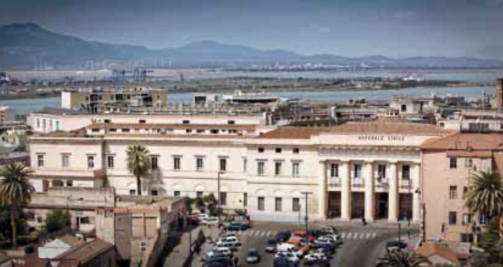Since the old St. Anthony Abbot Hospital on Manno Street was now inadequate and in poor hygienic condition, the city authorities commissioned Gaetano Cima, an architect in the First of the City, to prepare plans for the construction of a new hospital, outside the town. The foundation stone was placed on November 4, 1844. The Cagliari Civil Hospital, to which Cima devoted much of his professional life, is the work that best represents his purist neoclassical training. Inside this solemn space are marble busts of benefactors whose bequests contributed to the realization of the hospital. Paintings and other busts are located in the adjacent hemicycle. The special feature of this building, which brings it closer to the world’s most advanced architecture and which best denotes the knowledge of the distinguished architect, is the radial architectural layout, consisting of the building bodies, where the departments, distributed in a fan-like pattern, are interspersed but communicating with each other. St. John of God Hospital was partially opened in 1858, but not completed until 1927. The dungeons, carved into the stone, are also of special interest because stretchers with sick people found shelter there during the tragic events of World War II.









